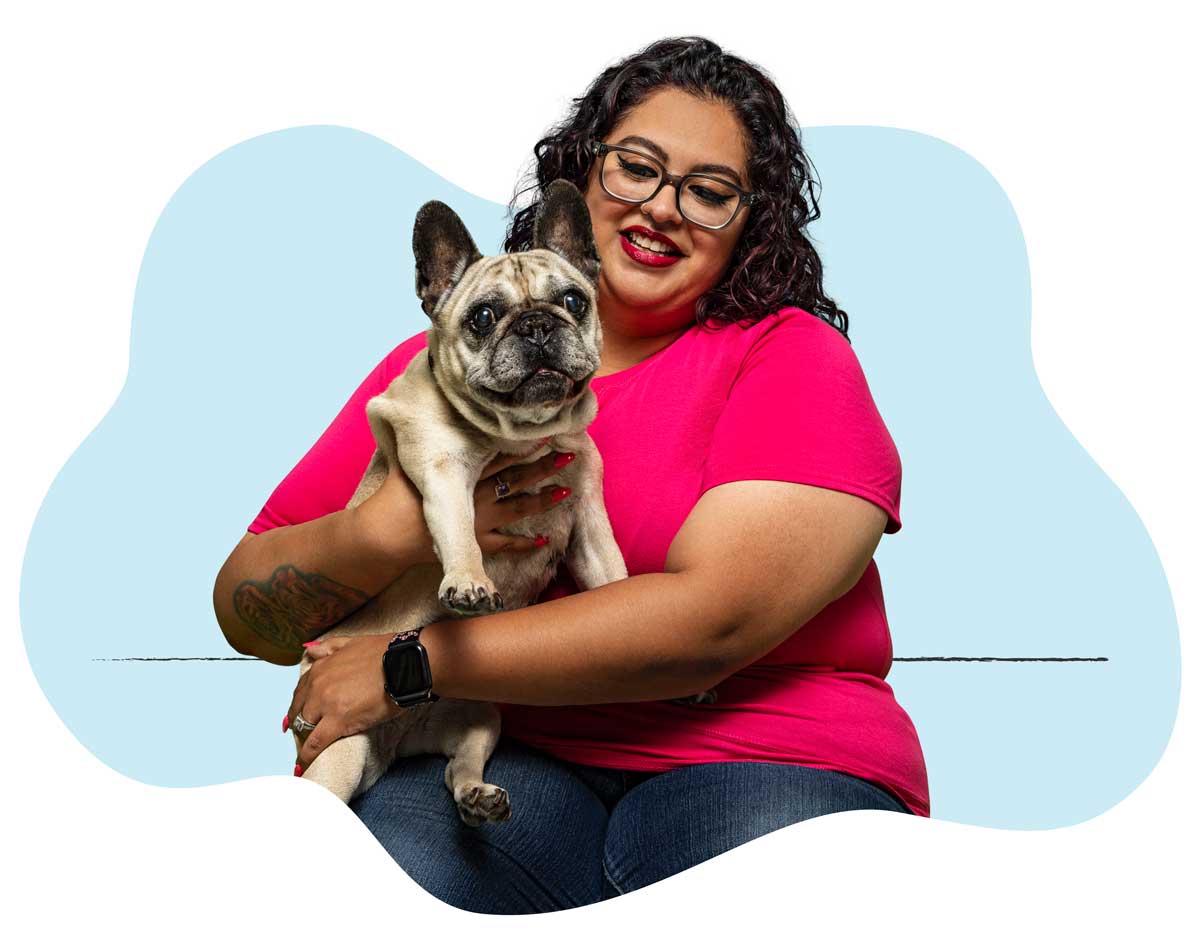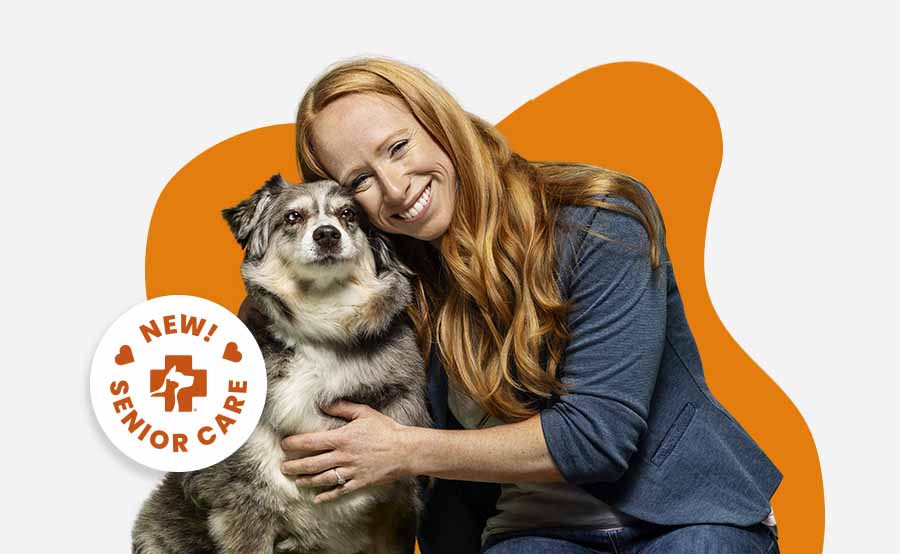older cat and dog skin conditions
As cats and dogs age, they often experience changes with their skin and coat.
We'll cover the most common skin and fur changes in older pets and how to help manage them.

Signs your senior pet has a skin or coat issue
- Constant scratching
- Constant licking
- Redness
- Discharge
- Thinning fur or bald patches
- Scabs or open sores
- Pustules or rashes
- Crusty, greasy skin
- Scaliness
- Lumps and bumps
- Thin or wrinkled skin

Things that can help your senior’s skin or coat issue
- Parasite prevention
- Proper grooming
- Diet/nutrition changes
- Supplements
- Prescription medications
Skin and coat changes in older dogs and cats
Your pet’s skin and fur do a lot! They protect vital organs, regulate temperature, and battle the elements. But as your dog or cat ages, you may see signs of it on their skin or coat. We’ll take you through those changes and tell you how to help.

Do older dogs have more skin problems? How about older cats?
Many skin conditions in dogs become more common with age, including infections, hot spots, and shedding problems. Skin conditions in cats often involve hair loss, oily fur, or irritated skin — especially in long-haired seniors. This is because as they age, their skin can become more delicate, and their immune system can become weaker.
Some common signs of aging include callus formation, graying of the fur, and a duller and/or thinner coat. These typically aren’t cause for concern, but it’s always good to mention them to your vet just in case.
Beyond common signs of aging, skin conditions in dogs and cats can include constant scratching, constant licking, redness, discharge, bald patches, scabs or open sores, pustules or rashes, crusty, greasy skin, scaliness, or lumps and bumps (more info on lumps and bumps here).
These symptoms can point to injury, infection, parasites, allergies, or something else. It’s important to take your furry friend to the vet at the first sign of these symptoms so they can advise on treatment and get your pet feeling better as soon as possible.
Call your vet if you notice these skin conditions in dogs or cats:
- Sudden hair loss
- Open wounds
- Bleeding or oozing skin
- Lumps or bumps that change in size
- Skin that smells bad or seems painful
Here’s how to help treat skin conditions in your older dog or cat
Since many different things can cause skin and fur issues, it’s important to get your senior pal to a vet. They’ll be able to do an exam and recommend any further testing to help figure out what’s plaguing your pet.
Treatment options typically include everything from medication to diet changes.




What to know about shedding in senior dogs
Excess shedding is sometimes seen in senior dogs. This can be a normal sign of aging, or it can point to one of several other issues, such as:
- Hormonal issues
- Parasites
- Bacterial infection
- Nutritional deficiencies
If you notice drastic hair loss, thinning fur, or bald spots, contact your vet as soon as possible.
Do older dogs get more hot spots? How do you treat a hot spot on a cat?
Hot spots are a common skin infection seen on cats and dogs. They have several causes, but essentially are the result of itchiness leading your pet to scratch, lick, or chew on themselves. This creates open sores or bald patches that we refer to as “hot spots.”
To treat a hot spot on a cat or dog, you’ll want to get to the underlying cause of the itchiness with your vet. They’ll likely prescribe a topical medication and instructions on keeping the spot clean and dry.
Please don’t attempt to use a home remedy on your pet’s hot spots — or any skin or coat condition! These are often ineffective or end up making the condition worse.
Support your senior pet’s skin at home
- Use year-round flea and tick prevention
- Brush regularly to remove dead hair and check for issues
- Use vet-recommended shampoo
- Avoid over bathing your dog
- Monitor any changes in coat texture or skin appearance
Medically reviewed by Ari Zabell, DVM and Heidi Cooley, DVM.
Custom care that grows with your pet
You can save more than 30% by bundling your pet’s preventive care with an Optimum Wellness Plan. On top of comprehensive exams, vaccinations, and diagnostic testing, these convenient packages also include unlimited office visits, 24/7 Pet Chat™, discounts on most Banfield products, and more.
Our NEW Senior Care Optimum Wellness Plan includes our most in-depth diagnostic testing yet. This helps us detect changes in organ function and overall physical health, so that we can begin any recommended treatment as soon as possible.

Senior Care
Designed to help detect early signs of age-related illness
This plan combines essential services like vaccinations and exams with in-depth diagnostic testing.
See what’s included in Senior CareSenior Care Plus
Designed to help detect early signs of age-related illness and support additional dental needs
This plan includes all the services in our Senior Care plan plus a dental cleaning.
See what’s included in Senior Care Plus Mites and mange
Mites and mange Podcast - Not Just Fluff
Podcast - Not Just Fluff





